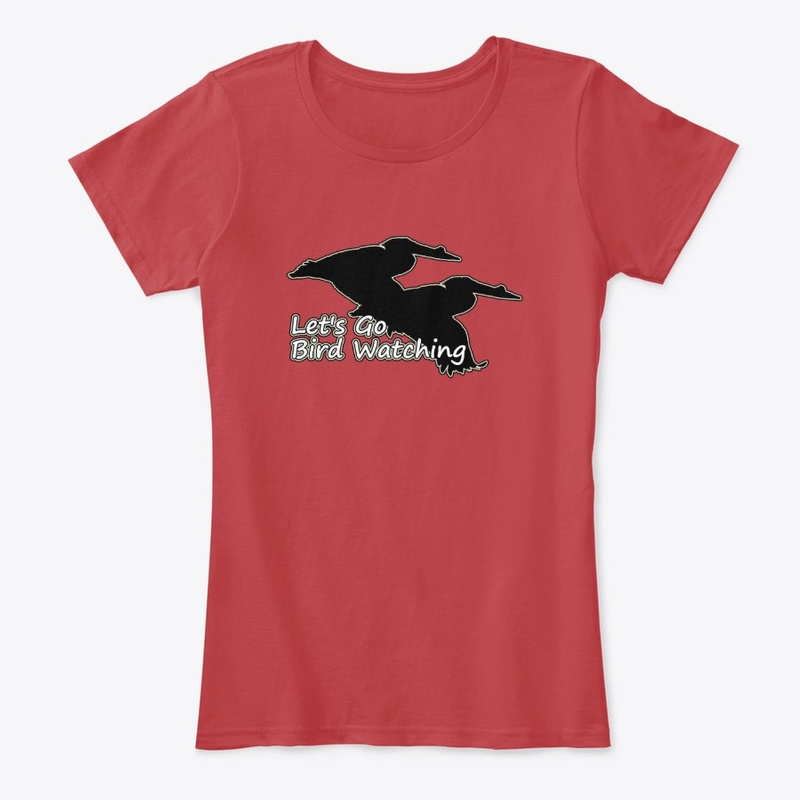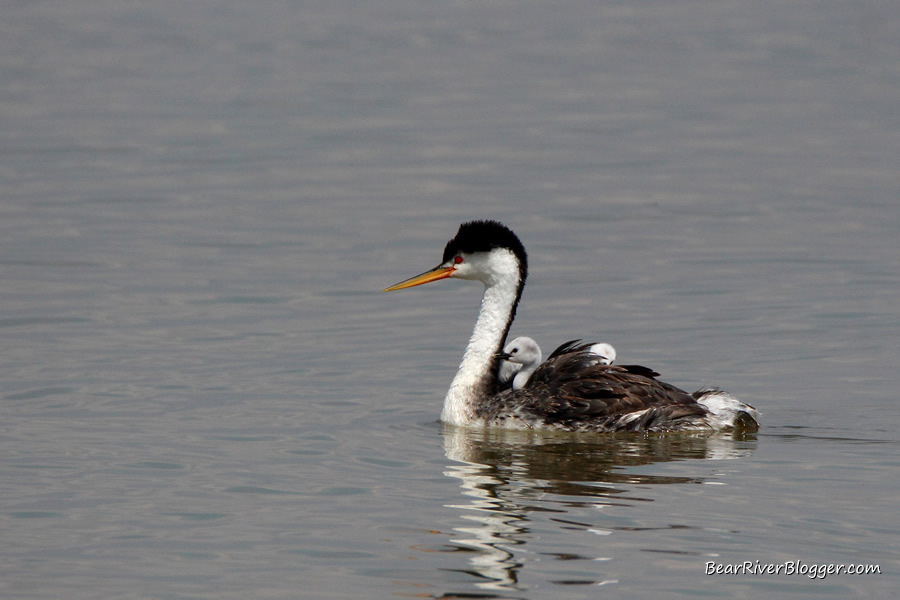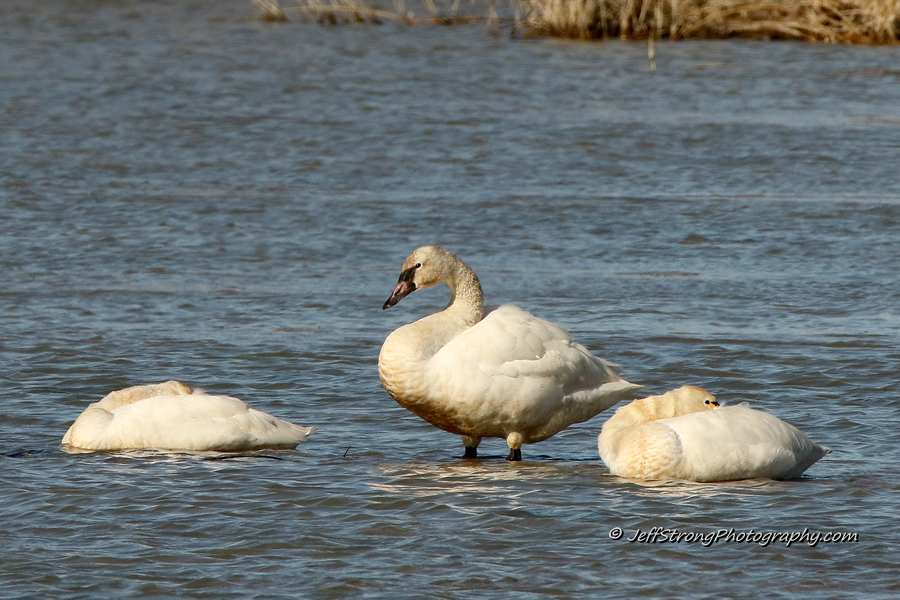Being someone who spends a lot of time on the Bear River Migratory Bird Refuge auto tour route, I am commonly asked when is the best time to come and see the western and Clark’s grebes with young chicks riding on their parents’ backs.
Well, without burying the lead, I’ll just go ahead and say now is the time and, in fact, all three images for this particular blog post were taken yesterday on the refuge auto tour route.
I was out on the Bear River Bird Refuge auto loop yesterday and found numerous pairs of grebes on the southern end of unit 2, seemingly a mixture of both the western and Clark’s grebe varieties.
Many of the grebes I spotted had 2 and sometimes 3 chicks being fed and tended to by their parents.
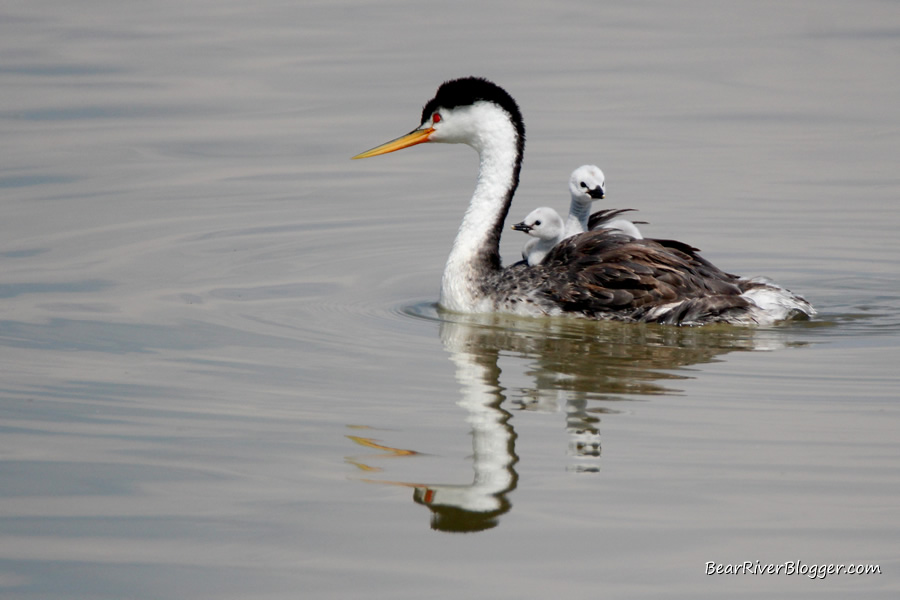
A good number of them still had smaller chicks riding on their parents’ backs as well.
Typically, July and August are the best months to see the baby grebes riding on their parents’ backs but this year, possibly due to the severe heat and ongoing drought Utah and the Western United States have faced this summer, I am seeing quite a few grebes with babies into late September, something that I personally find quite unusual.
In fact, we are less than 2 weeks away from the start of the 2022 waterfowl season and the number of grebes with chicks this late in the breeding season confounds me, to say the least.
(Tundra Swan Spring Migration.
Don’t forget to subscribe to our Bear River Blogger YouTube channel for short nature clips and periodic updates about the Bear River Migratory Bird Refuge.)
During the summer, the Clark’s and western grebe live on large freshwater lakes and wetlands in the western United States and western Canada, including the Bear River Migratory Bird Refuge in Northern Utah, as one example.
In fact, the Bear River Migratory Bird Refuge auto tour route is one of the best places to get a great view of both the western and Clark’s grebe during the summer months as numerous pairs fly to the refuge to breed each year.
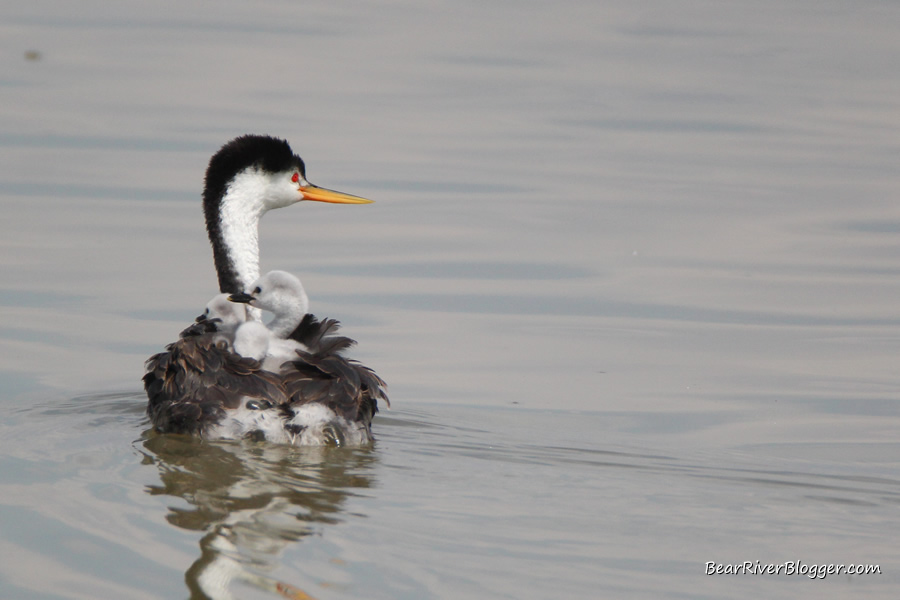
After the summer breeding season is over, the Clark’s grebe, in particular, migrates to the coastal waterways and shores of the western United States and northern Mexico to spend the winter season.
Capable of diving and swimming deep underwater for food, both the Clark’s and western grebe are primarily fish-eating birds, but they will occasionally feed on aquatic insects when needed.
Well, if you are itching to get out to do some late summer or early fall bird watching, the grebes are out and about on the southern portion of the Bear River Migratory Bird Refuge auto tour route.
Don’t forget to head on over to our subscribe page and sign up for email notifications for future blog posts.
We also offer 20% off everything with coupon code save20 at Bird Shirts and More as a thank you for following and supporting our blog.
